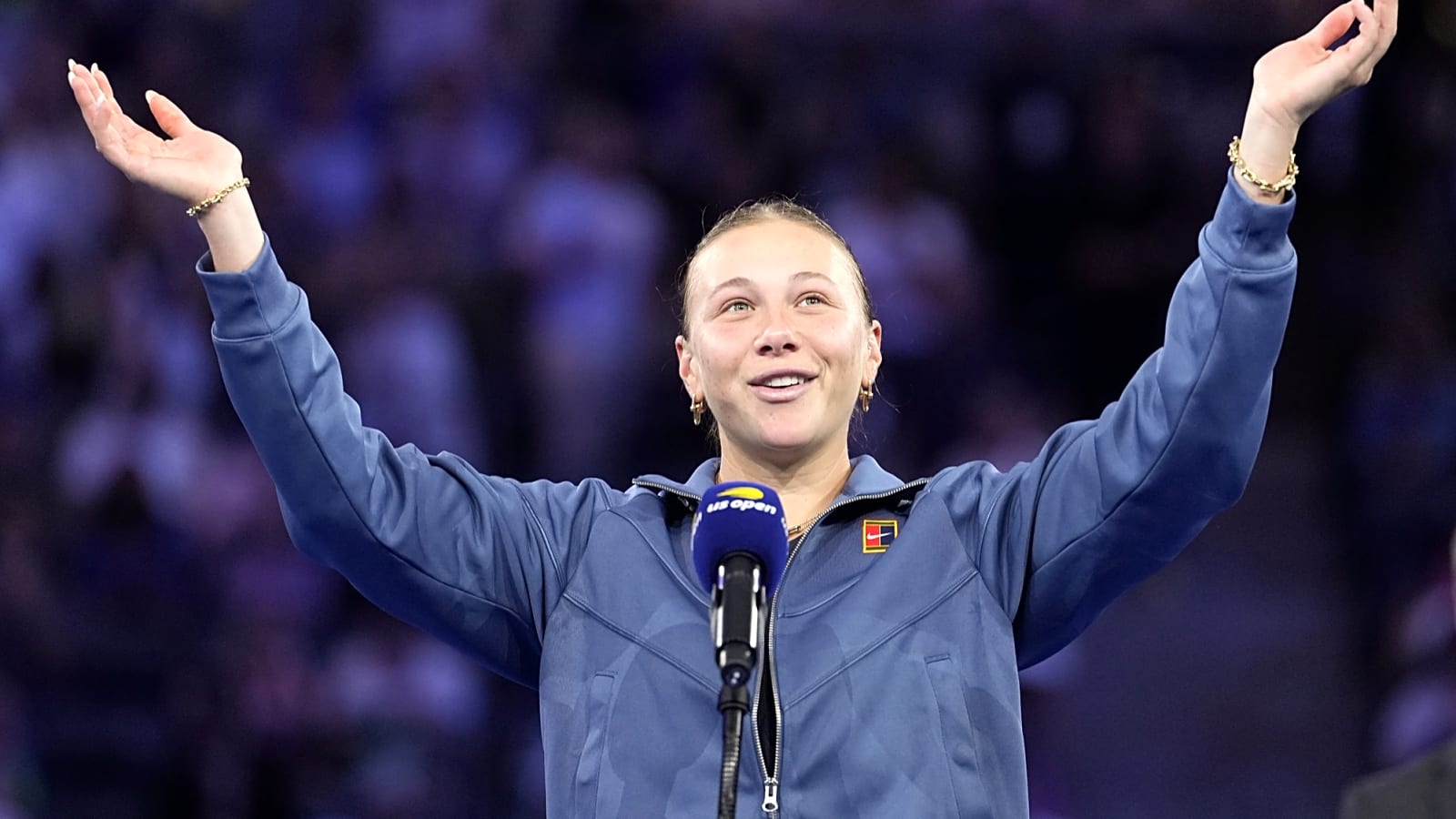
Every so often in tennis, a player resurfaces with such force that the sport has no choice but to pause and recalibrate. Amanda Anisimova’s 2025 season is one of those moments. A year ago, the idea of her winning two WTA 1000 titles, reaching the finals at both Wimbledon and the US Open, and booking her place in the season-ending Tour Finals would have been filed under fantasy. Today, it’s reality—and it’s one of the most improbable comeback stories the sport has seen in years.
Anisimova, just 24, is closing the season ranked world No. 4. While she predictably pulled out of the Wuhan 1000 today, she’s positioned to earn close to $10 million this year if she makes a deep run in her first Tour Finals in Saudi Arabia. Yet as dazzling as the numbers are, they are not the real story. Her rise in 2025 is not just about winning matches—it’s about resilience, reinvention, and the long shadow of potential finally being lit.
A career once on pause
Tennis fans have been waiting for Anisimova to become this player for years. In 2019, at just 17, she stunned the French Open by reaching the semifinals and seemed destined to join the new wave of American champions. Then life intervened.
Her father and longtime coach, Konstantin Anisimov, passed away suddenly in 2019. The loss was not just personal—it was existential. Tennis is a sport where parents often double as coaches, drivers, financial backers, and emotional anchors. To lose that at 17 was devastating. The early shine dimmed. Her ranking slipped. Injuries mounted.
Then, in 2023, Anisimova stepped away entirely, announcing an indefinite mental health break. She spoke candidly about the burnout, anxiety, and pressures that had accumulated since her teenage years. In a sport notorious for grinding down even its most resilient players, her decision to stop was as brave as anything she’s done on the court.
The 2025 breakthrough
Fast forward to this year, and Anisimova’s resurgence has been breathtaking. Doha set the tone, where she blasted through a field stacked with top-10 players to win her first WTA 1000 title. A few months later in Beijing, she did it again—cementing herself not as a streak but as a force.
Her runs at Wimbledon and the US Open, where she finished runner-up both times, revealed a different side. She wasn’t just overpowering opponents with her flat, penetrating groundstrokes—she was managing matches, keeping composure in pressure moments, and showing tactical maturity that had once (well, always) been missing.
The statistics tell one story: multiple finals at our sport’s biggest events, more than 50 match wins, and a leap to No. 4 in the world. But the intangibles tell a better one: Anisimova plays with a looseness that suggests she’s finally playing for herself, not for expectation, not for ghosts, and not for rankings.
Resilience at the core
The spine of this season is resilience. Resilience to keep believing that her career wasn’t already written. Resilience to take the unpopular step of walking away and coming back only when she was ready. Resilience to shoulder the weight of her father’s absence and still carve her own identity in the sport they once shared.
There’s a temptation in sportswriting to romanticize comebacks as inevitable, as if champions always find their way back. But Anisimova’s story was never guaranteed. For every player who steps away and returns stronger—think Ash Barty or Kim Clijsters—there are countless others who disappear. What makes her 2025 run improbable isn’t just the scale of her success, but the fact that it happened at all.
A decade ahead?
At 24, Anisimova is still a young player in tennis terms. The sport has shifted: careers are longer, peak years now stretch into the early thirties, and players manage their schedules with more care. If this is Anisimova’s foundation, the ceiling remains sky-high.
The Tour Finals in Saudi will be her proving ground in one more way: it’s the first time she’ll compete against the season’s eight best players in a concentrated, high-stakes round robin. Win there, and her improbable rise becomes a coronation.
But even without lifting that trophy, Anisimova has reintroduced herself not as a promising talent, but as a leading contender.
She’s not “the next big thing” knocking at the door. In the words of Walter White, she IS the one who knocks.
More than tennis
Sports narratives resonate most when they mirror broader human truths. Anisimova’s story resonates because it is about more than tennis. It’s about grief, about burnout, about the courage to pause when the world is screaming “go.” It’s about the fact that sometimes, potential is not a straight line—it bends, it stalls, it fractures, and if you’re lucky, it rises again.
This season, Amanda Anisimova has reminded the tennis world—and perhaps herself—that resilience is the true currency of greatness. The trophies and checks matter, but the comeback is priceless.
More must-reads:
- Edwin Diaz has stinging words for Mets fans after Dodgers introduction
- Major updates on T.J. Watt's lung issue, status for Dolphins game revealed
- The 'Active NBA PPG leaders' quiz
Breaking News
Trending News
Customize Your Newsletter
 +
+
Get the latest news and rumors, customized to your favorite sports and teams. Emailed daily. Always free!








